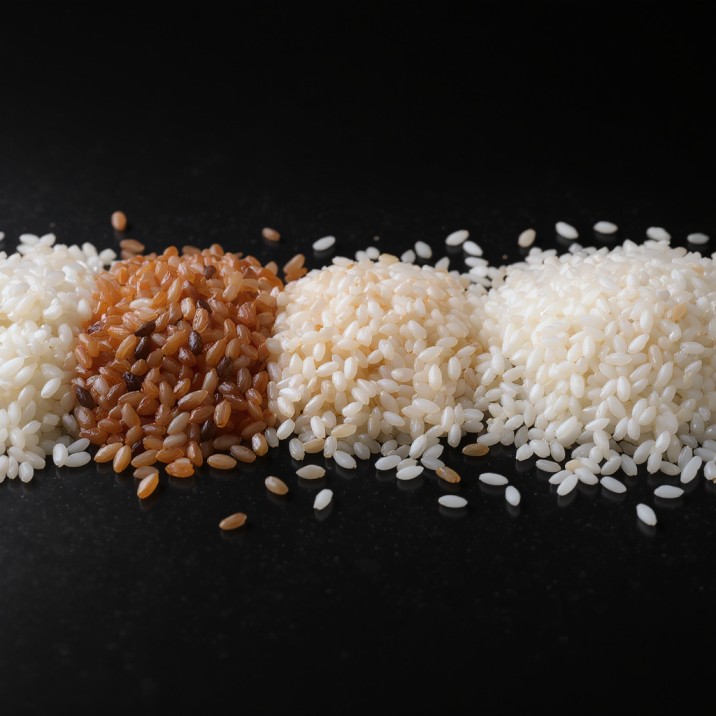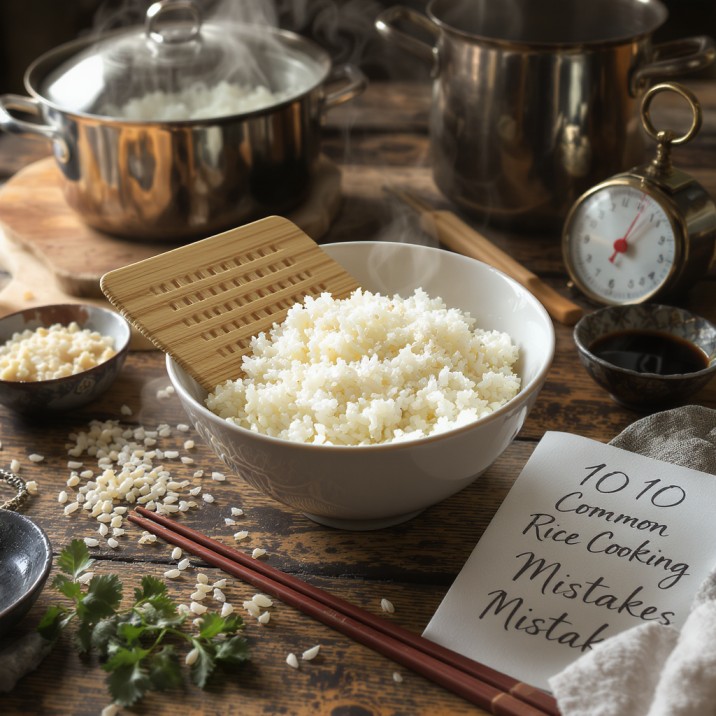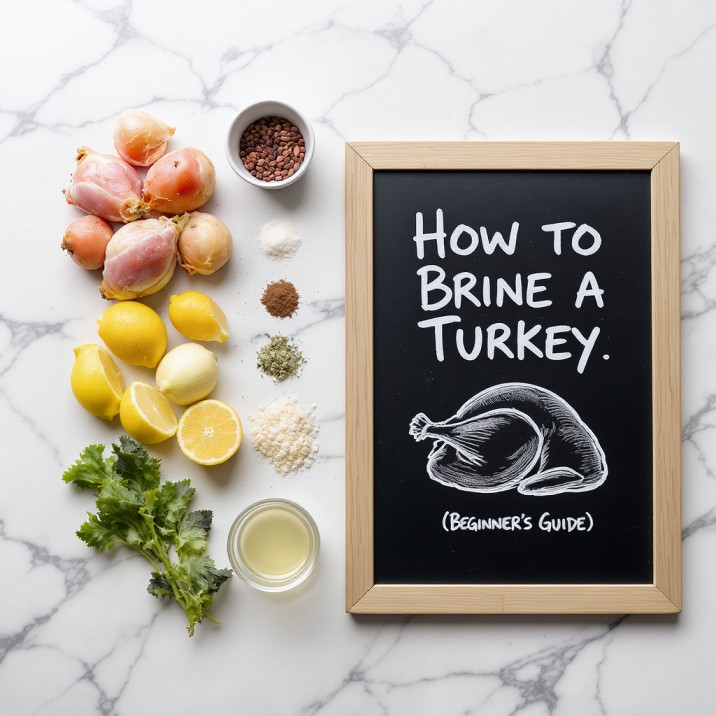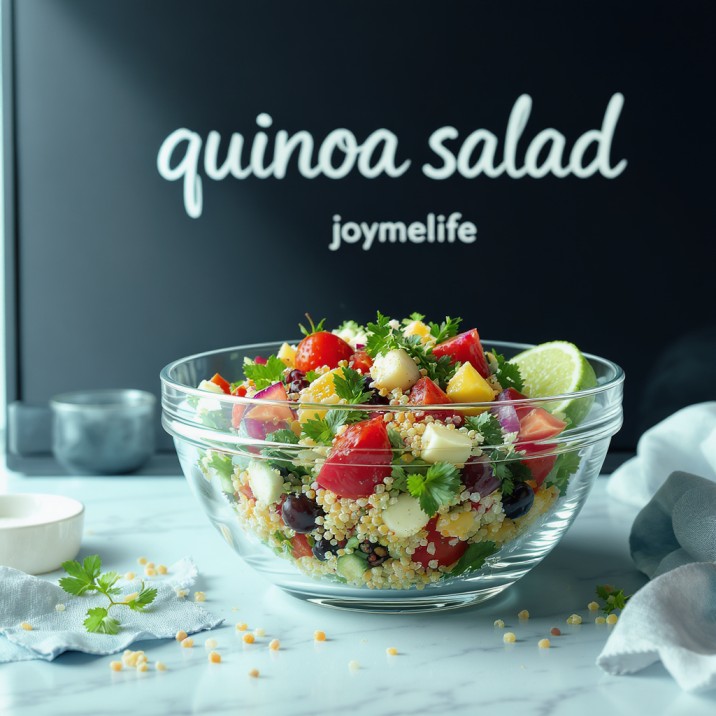
Published : 13 Nov 2025
It happens to the best of us. You plan a beautiful stir-fry or a rich curry. You spend hours on the main dish. Then, you serve it over a bed of rice that is… well, a gummy paste. Or maybe it’s crunchy in the middle. Or maybe the bottom is a blackened brick stuck to your pot.
Why is cooking rice so difficult?
It seems like the simplest task in the kitchen: boil water, add grain. Yet, achieving that restaurant-quality texture—where every grain is distinct, fluffy, and tender—is a science.
At Joymelife, we want to banish bad rice from your kitchen forever. The truth is, you don’t need a fancy rice cooker to get perfect results (though they help!). You need to stop making these 10 common rice cooking mistakes.
Let’s troubleshoot your technique.
Why Is Cooking Rice So Deceptively Hard?
Rice is temperamental because it relies on two invisible factors: absorption and steam. If you mess up the ratio, the absorption fails. If you mess up the heat or the lid, the steam fails. It’s a balancing act, but once you understand the rules, it becomes easy.
The “Perfect Rice” Cheat Sheet (Ratios)
Before we get to the mistakes, save this chart. This is the Holy Grail of rice cooking. 90% of failures happen because people use the same ratio for Basmati as they do for Brown rice.

Water-to-Rice Ratios by Grain Type
| Rice Variety | 1: 2 | Cooking Time (Simmer) | Resting Time |
| Long Grain White | 1: 1.25 | 15-18 mins | 10 mins |
| Jasmine | 1 : 1.25 | 12-15 mins | 10 mins |
| Basmati | 1: 1.1 | 15-18 mins | 10 mins |
| Short Grain (Sushi) | 1: 2.25 | 15-20 mins | 10 mins |
| Brown Rice | 1 : 2.25 | 40-45 mins | 10 mins |
The 10 Mistakes That Are Ruining Your Dinner
Are you guilty of these? (I know I used to be guilty of #5 and #8!)
1. The Cardinal Sin: Not Rinsing Your Rice
If your rice always turns out sticky, gummy, or clumped together, this is why. Rice is coated with a fine layer of excess starch. When that starch hits boiling water, it turns into a glue.
- The Fix: Rinse your rice in a fine-mesh sieve under cold water until the water runs clear. This usually takes about 30-45 seconds.
2. Cooking by “Feel” (The Wrong Ratio)
Many of us grew up with the “Knuckle Method” (filling water to the first knuckle of your finger). While grandmas everywhere can do this perfectly, it’s risky for beginners because everyone’s fingers and pots are different sizes.
- The Fix: Use a measuring cup. Stick to the ratios in the chart above until you know your pot perfectly.
3. Using the Wrong Pot Size
- Too Big: If you cook 1 cup of rice in a giant Dutch oven, the water spreads out too thin and evaporates before the rice cooks. Result: Crunchy rice.
- Too Small: The starchy water will bubble up and spill all over your stovetop. Result: A mess.
- The Fix: For 1-2 cups of rice, use a 2-quart saucepan.
4. Boiling Instead of Simmering
Rice needs a gentle environment. If you boil it violently the whole time, the water evaporates too fast, causing the grains to break apart and release more starch. The outside will be mushy, and the inside will be hard.
- The Fix: Bring the water to a boil, immediately turn the heat down to Low, and cover. It should be a gentle whisper of a simmer.

5. Lifting the Lid (The Peeking Problem)
I know you want to check on it. Don’t.
Cooking rice is about trapping steam. Every time you lift the lid to “check,” you release the pressurized steam that is cooking the top layer of the rice. This drops the temperature inside the pot and leads to uneven cooking.
- The Fix: Use a glass lid if you have trust issues. Otherwise, set a timer and walk away.
6. Stirring the Rice While It Cooks
Stirring is great for Risotto, where you want creaminess. It is death for fluffy white rice. Stirring activates the starch and breaks the grains.
- The Fix: Once you put the lid on, do not touch the rice with a spoon until it is done.
7. Skipping the Salt (and Fat)
Rice absorbs the flavor of the liquid it cooks in. If you cook it in plain water, it tastes like… plain water.
- The Fix: Add 1/2 teaspoon of salt and a teaspoon of oil or butter to the water before boiling. This adds flavor and the fat helps keep the grains separate. Better yet? Cook it in chicken or vegetable broth!
8. Eating It Immediately (Skipping the “Rest”)
This is the secret that separates home cooks from pros. When the timer goes off, the rice at the bottom is wetter than the rice at the top. If you serve it immediately, it will be wet and mushy.
- The Fix: Turn off the heat. Leave the lid ON. Let the pot sit on the cooling burner for 10 minutes. This allows the moisture to redistribute evenly through every single grain.
9. Treating All Rice the Same
You cannot swap Brown rice for Jasmine rice and expect the same result. Brown rice has the bran layer intact, which acts like a raincoat—it takes much longer for water to penetrate it. Jasmine rice is soft and cooks very fast.
- The Fix: Check the package or our chart above. Adjust your water and time accordingly.
10. Not Fluffing at the End
If you scoop rice straight out of the pot with a heavy spoon, you smash the grains together, creating clumps.
- The Fix: After the 10-minute rest, use a fork (not a spoon) to gently fluff the rice, releasing the final puff of steam and separating the grains.
Troubleshooting: Can I Save My Ruined Rice?
It happens. Before you throw it out, try these rescue missions.
Problem: It’s Watery/Soggy
You opened the lid and there is still a pool of water, but the rice tastes done.
- The Rescue: Drain the excess water carefully. Turn the heat to low, take the lid off, and let the excess moisture cook off for 2-3 minutes.
Problem: It’s Crunchy in the Middle
The water is gone, but the rice is hard and chalky.
- The Rescue: Add 1/4 cup of boiling water. Put the lid back on tight. Cook on very low for another 5 minutes. The steam should penetrate the center.
Problem: The Bottom is Burnt
You smell burning.
- The Rescue: Take it off the heat immediately. Do NOT scrape the bottom. The burnt taste is mostly in the black crust. Scoop out the good white rice from the top and leave the bottom layer in the pot to soak later.
Equipment Needed
- Heavy-bottomed saucepan (a 2-quart size is ideal for everyday use). Thin pots create “hot spots” that burn rice.
- Tight-fitting Lid: Essential for trapping steam.
- Fine-mesh Sieve: For rinsing.
- Measuring Cup: For accuracy.
- Fork: For fluffing.

Recipe FAQs (Common Questions)
Q: Should I soak my rice before cooking?
A: For Basmati rice, yes! Soaking for 20-30 minutes helps the grains expand to that super-long length. For regular long-grain or Jasmine, it’s not strictly necessary, but rinsing is.
Q: Can I stir rice once?
A: You can give it one quick stir right when you add the rice to the boiling water to ensure no clumps are stuck to the bottom. After that—hands off!
Q: Why is my brown rice always mushy?
A: You likely used too much water or cooked it too long. Brown rice is tricky. Try the “pasta method” for brown rice: boil it in a large pot of water like pasta for 30 minutes, then drain it, return to the pot, cover, and steam for 10 minutes off-heat.
Q: What is “Parboiled” or “Converted” rice?
A: This is rice that has been partially boiled in the husk before processing. This drives nutrients from the husk into the grain and hardens the starch. It is almost impossible to overcook (it never gets mushy), but it has a firmer, rubberier texture and less ability to absorb sauces compared to regular white rice
Q: Does rinsing rice remove nutrients?
A: In the US, white rice is often “enriched” with dusting of vitamins (niacin, iron, thiamin). Rinsing does wash some of these added vitamins away. However, most chefs agree the texture improvement from rinsing starch away is worth the minor nutritional loss. Imported rice (like Jasmine from Thailand) is usually not enriched, so rinse away!
Conclusion: You Are Now a Rice Master
Cooking perfect rice isn’t magic; it’s just about respecting the grain. By avoiding these 10 common rice cooking mistakes, you’ll go from dreading that pot on the stove to producing fluffy, aromatic, perfect rice every single time.
Now, go grab that bag of rice and practice. Your stir-fry deserves it.





